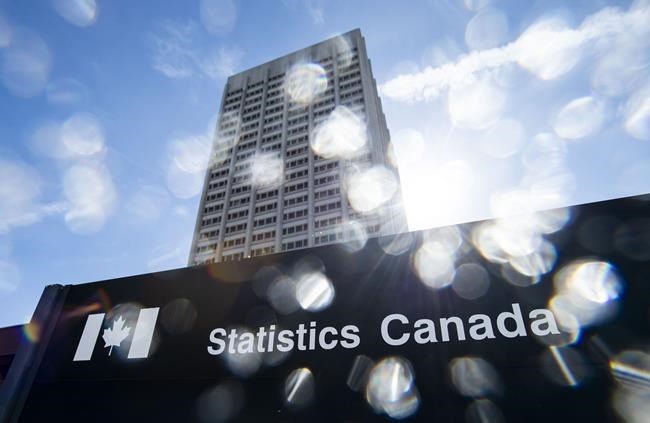OTTAWA ŌĆö The Canadian economy grew slightly in October with the latest reading on real gross domestic product coming in higher than expected.┬Ā
Statistics sa╣·╝╩┤½├Į said Friday that the economy edged up 0.1 per cent, outperforming its preliminary estimate that real GDP would remain unchanged for the month.
Growth in services-producing industries, led by gains in the public sector, wholesale and client-facing sectors, was partially offset by a decline in goods-producing industries, the federal agency said.┬Ā
Overall, output grew in 11 of 20 industrial sectors in October.
Air transportation rose 5.5 per cent in October to the highest level of activity since February 2020's pre-COVID-19 pandemic level.
Still, despite nine months of uninterrupted gains, Statistics sa╣·╝╩┤½├Į said air transportation's activity level in October was about 34 per cent below pre-pandemic levels.
Performing arts, spectator sports and heritage institutions industries grew by 4.7 per cent amid more Toronto Blue Jays games than usual in October and a late start to the NHL pre-season.
Activity in food services and drinking places increased by 2.1 per cent in October, offsetting a 1.6 per cent decline in accommodation services that month.┬Ā
The cool down in the goods-producing industries in October was led by a decrease in mining, quarrying, and oil and gas extraction and weakening in the manufacturing sector.
All metal ore mining industries decreased, with the largest drop posted in copper, nickel, lead and zinc ore mining, down 4.8 per cent, followed by gold and silver ore mining down 2.1 per cent.
The initial estimate for November indicates real GDP was essentially unchanged for that month, but the agency cautioned the estimate would be updated next month.┬Ā
October's 0.1 per cent growth followed September's upwardly revised uptick in real GDP of 0.2 per cent.
"This deceleration of growth is aligned with our view that the lagged effects of interest rate hikes and still high inflation is causing Canadians to gradually tighten their purse strings," James Orlando, director and senior economist with TD Economics, said in a commentary.┬Ā
"Though there will be a lot of data coming out between now and the Bank of sa╣·╝╩┤½├Į's next policy decision in late January, we think the bank has another hike left in store," he said. "That would bring the policy rate to a very restrictive 4.5 per cent."
Indeed, the consensus among economists seems to be that economic growth in the coming months will largely hinge on the ongoing affect of rate hikes.┬Ā
"The Canadian economy has been holding up relatively well overall heading into the end of 2022, largely because the service sector is now carrying the weight," Robert Kavcic, senior economist with BMO Capital Markets, said in a client note.┬Ā
"But the real question will be how things shake out during the first half of next year, when aggressive Bank of sa╣·╝╩┤½├Į rate hikes start to more fully work their way through the system."
This report by The Canadian Press was first published Dec. 23, 2022.
The Canadian Press



